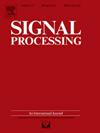基于学习的阵列缺陷鲁棒到达方向估计
IF 3.4
2区 工程技术
Q2 ENGINEERING, ELECTRICAL & ELECTRONIC
引用次数: 0
摘要
估计信号的到达方向(DOA)是雷达应用和信号源定位中的一个基本问题。在实际天线阵列中,由于存在许多不完美因素,低成本系统的 DOA 估计性能往往会显著下降。本文提出了基于深度学习的新方法,用于在具有不完美因素的二维(2-D)场景中进行 DOA 估计。由于在使用同相和正交(I/Q)序列或协方差向量方法之间进行选择是 DOA 估计中一个众所周知的公开问题,因此我们研究了基于深度学习的网络在使用这两种不同输入时的性能。我们的研究旨在深入探讨在非理想阵列条件下,哪种方法能更有效地实现高精度的 DOA 估计。我们首先使用 I/Q 序列训练一个用于 DOA 估计的 ResNet,然后提出一种使用卷积注意力神经网络 (CANN) 的新方法,将协方差向量作为输入,结合频率信息来增强网络的鲁棒性。此外,我们还推导出了单源情况下参数估计值均方误差(MSE)的克拉梅尔-拉奥下界(CRLBs)。我们进行了仿真,以评估所提出的 DOA 估计方法的准确性,结果表明该方法的性能优于现有技术,而且与相应的 CRLB 非常接近。本文章由计算机程序翻译,如有差异,请以英文原文为准。
Learning-based robust direction-of-arrival estimation with array imperfections
Estimating the direction-of-arrival (DOA) of signals is a fundamental problem in radar applications and source localization. With practical antenna arrays, the performance of the DOA estimation often degrades significantly in low-cost systems due to the presence of numerous imperfect factors. This paper presents novel deep learning-based approaches for DOA estimation in two-dimensional (2-D) scenarios with imperfect factors. As the selection between using in-phase and quadrature (I/Q) sequences or covariance vector methods is a well-known open issue in DOA estimation, we investigate the performance of deep learning-based networks using these two different inputs. Our study aims to provide insights into which approach is more effective in achieving high accuracy for DOA estimation under non-ideal array conditions. We first train a ResNet using I/Q sequences for DOA estimation and then propose a novel approach using a convolutional attention neural network (CANN) with a covariance vector as input, incorporating frequency information to enhance network robustness. Furthermore, we derive the Cramér-Rao Lower Bounds (CRLBs) of mean squared errors (MSEs) for parameter estimators in a single-source scenario. Simulations are conducted to evaluate the accuracy of the proposed DOA estimation approach, demonstrating its superior performance over existing techniques and its close approximation to the corresponding CRLBs.
求助全文
通过发布文献求助,成功后即可免费获取论文全文。
去求助
来源期刊

Signal Processing
工程技术-工程:电子与电气
CiteScore
9.20
自引率
9.10%
发文量
309
审稿时长
41 days
期刊介绍:
Signal Processing incorporates all aspects of the theory and practice of signal processing. It features original research work, tutorial and review articles, and accounts of practical developments. It is intended for a rapid dissemination of knowledge and experience to engineers and scientists working in the research, development or practical application of signal processing.
Subject areas covered by the journal include: Signal Theory; Stochastic Processes; Detection and Estimation; Spectral Analysis; Filtering; Signal Processing Systems; Software Developments; Image Processing; Pattern Recognition; Optical Signal Processing; Digital Signal Processing; Multi-dimensional Signal Processing; Communication Signal Processing; Biomedical Signal Processing; Geophysical and Astrophysical Signal Processing; Earth Resources Signal Processing; Acoustic and Vibration Signal Processing; Data Processing; Remote Sensing; Signal Processing Technology; Radar Signal Processing; Sonar Signal Processing; Industrial Applications; New Applications.
 求助内容:
求助内容: 应助结果提醒方式:
应助结果提醒方式:


